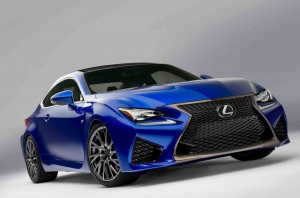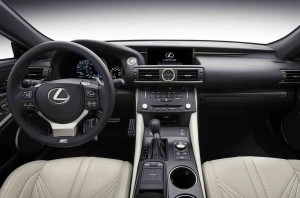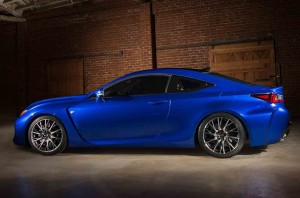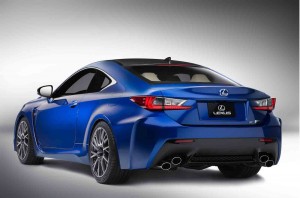The Lexus RC-F coupé has been unveiled ahead of the Detroit motor show and will go head-to-head with the new BMW M4 when it goes on sale, powered by a V8 engine producing “in excess of 450 bhp” and incorporating technology derived from the Lexus LFA supercar.
The new 5.0-litre V8 is central to the RC-F’s driver appeal, according to the car’s chief engineer, Yukihiko Yaguchi. At 450 bhp it out-punches the 425 bhp of BMW’s new twin-turbo straight six, and Lexus says it is the most powerful road-going V8 it has ever built. However, other critical figures, such as its torque output and economy, have not been released.
“In our analysis the naturally aspirated V8 delivered the best high-performance machine,” said Yaguchi. “We didn’t consider any other power unit. We wanted an engine that could be smooth in normal use, but deliver large power on track. We looked at hybrid technology, and one day it may be suitable, but at the moment it cannot operate at these levels in consistent track use.”
Although the Lexus LFA ended its production run in 2012, Yaguchi outlined how it still influences all engineers working on Lexus’s F-branded cars, and how lessons learned in its development had been incorporated in to the new RC coupé, which uses the standard car’s platform but which has several bespoke modifications, including the suspension, powertrain, chassis strengthening and exterior and interior styling.
“The LFA remains at the top of the F models, and it influences how we approach a project,” said Yaguchi. “We try to follow its direction as much as possible, so for instance the airflow is inspired by it, especially for cooling, we have an active rear wing that deploys above 50 mph, the sound of the engine is tuned to emulate the LFA sound and the optional carbonfibre bonnet and roof are made by the same company as made the carbonfibre for the LFA.”
Despite this, Yaguchi says the RC-F is designed “with the goal of being capable of being driven fast by anyone, regardless of their ability.” He denied that the RC-F had been benchmarked against any rival cars, but conceded his team had spent time in the last-generation BMW M3 and Mercedes C63 AMG to help determine their development direction.
The dramatic exterior styling is said by Lexus to boost performance and demonstrate the car’s capabilities. The bonnet is set higher on the RC-F than the standard car, while the wheel arches are flared in order to house the standard 10-spoke, 19-inch wheels. The front bumper and wings carry air ducts to boost cooling, while aerodynamic fins are designed to aid stability. Stacked, trapezoidal quad exhausts also add to the rear-end drama.
Inside, the instrument panel is dominated by a central dial that shows different displays according to which of four driving modes are selected. Although Lexus has not revealed the driving mode types, Yaguchi confirmed a bespoke track option was available. Leather sports seats are standard, as is a new steering wheel design to Lexus, with elliptical cross-section and thick grip, and shift paddles.
The standard RC coupé was shown at the Tokyo motor show last year in two forms, with the RC300h hybrid, which mates an electric motor with a 2.5-litre engine, taking centre stage. The RC350, powered by a 3.5-litre V6 engine, was also shown.



